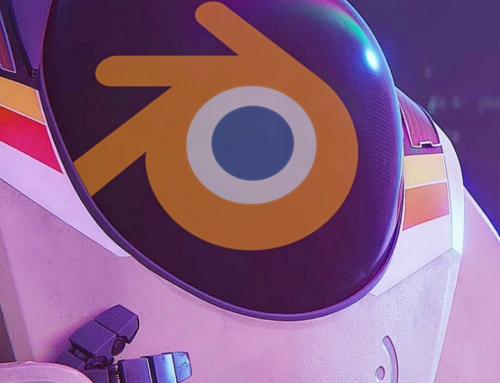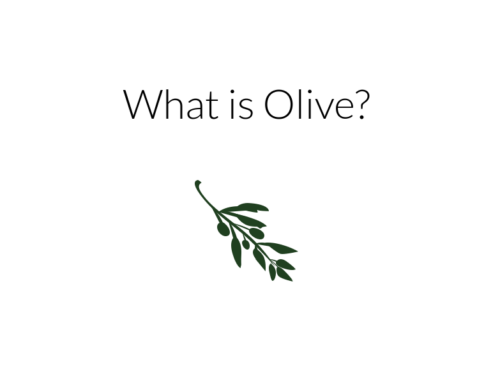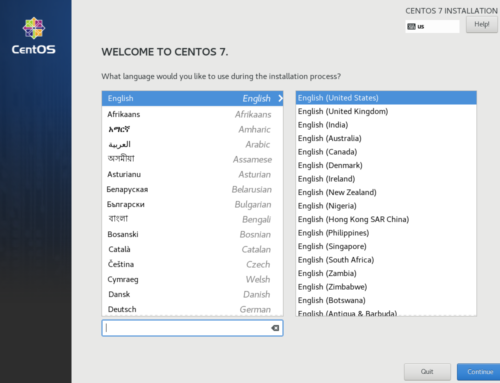We’re experiencing a glut of fast-paced action adventure titles in the indie genre at present. Each new release presents iterative takes on games like Castelvania, The Souls franchise, and stylish action games like DMC. While it’s nice to see a revival of a genre I adore, I’ve been spoilt for choice and wandered into the unkown looking for a change of pace.
Also Read: Next Up Hero Shows Promise with Interesting New Mechanics
While there are plenty of narratively driven titles, visual novels, and sandboxes/platformers to choose from, it’s a bit harder to find engaging experimental games. Few execute well on their premise, which is why I was so surprised by Donut County.
This is a title that combines a sort of extreme Looney Toons logic with very human, relatable themes to create something much more. Donut County hits a rare balance that elevates it, past the contrived strangeness of most experimental games, into a realm of interactive magical realism.
Gameplay: 4/5
In Donut County, the player interacts with the world as several characters, that use a smart phone app to move around a hole in the ground. Things that fall in the hole increase its size, allowing the player to engulf larger objects.
As stages progress, the player finds other ways to interact with the environment, like swallowing fireworks to launch them at obstacles, or moving water around the level to solve puzzles. Each level is a retelling of the main characters’ actions that helps to characterize the supporting cast and outline the main conflict without bogging the player down with exposition.
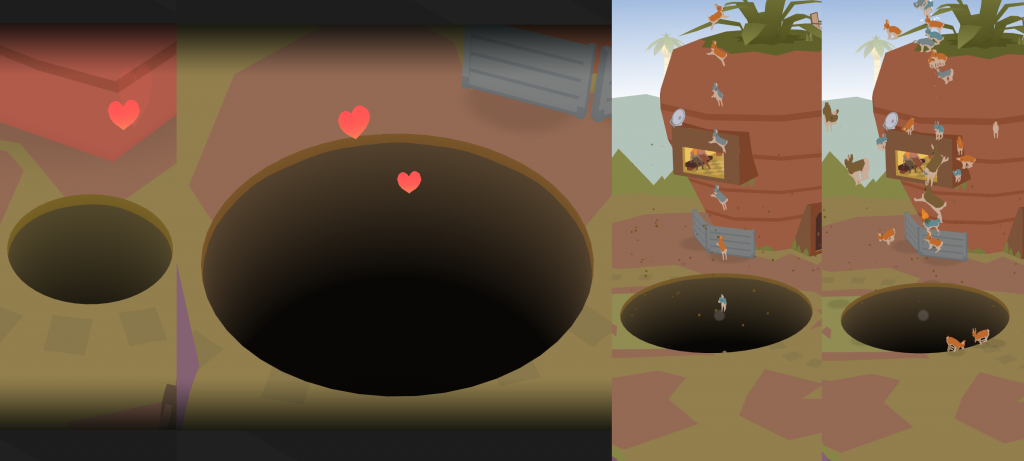
Swallowing a pair of rabbits causes them to breed, growing your hole. There are many other gameplay quirks like this.
That gameplay loop is as simple as it sounds, and the influence of Katamari Damacy on both the concept and the game’s visual language is clear. Execution of both the physics and light puzzle solving elements, though, keep it from becoming boring. While I found myself wanting larger scale stages and more fleshing out of the auxiliary mechanics, the game feels much more like a fun vehicle than a burden to the narrative, as is the case with so many similar titles.
Story: 4/5
As mentioned before, you play (primarily) as a raccoon, who causes a disaster with an app that allows him to control magical holes. His friends force him to face the reality of his actions when they piece together what’s happening, and he redeems himself by helping them escape the caverns underneath the city.
The simplicity of the story in Donut County mirrors the core gameplay concept. Small scale, but implemented very well. On the surface, the bright, minimal visual style and narrative wouldn’t seem out of place in a children’s book, but the amount the game covers in such a short span, that in the few hours it takes to run through it all, you’re left with the urge to play it again to comb the game for missed details (the Trashopedia makes replay that much more rewarding.)
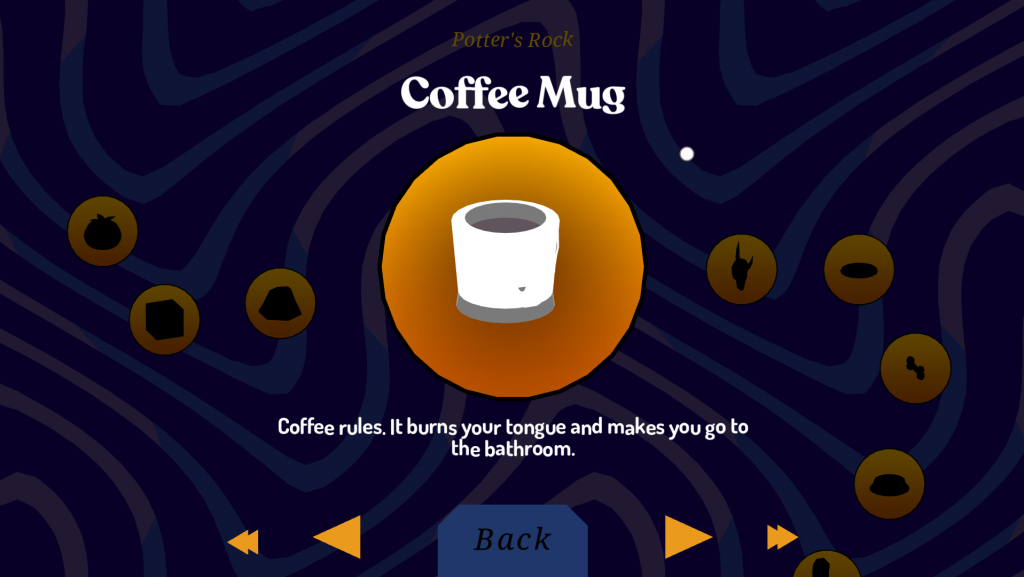
The Trashopedia catalogs every item you sink, with an amusing description that sometimes includes game lore.
It’s also important to note that Donut County achieves all this without falling into that rut of cynical preachiness that so many other games (e.g. Detroit: Become Human) tend to fall back on when discussing sensitive issues. Show vs. tell is the mantra here, and the simplicity of everything helps communicate the creators’ message clearly.
Things do fall apart a little bit when it comes to dialogue, though. It’s mostly better than your average video game writing, and the sense of humor is great. The jokes are relevant and topical without being over-referential, and makes great use of cartoon logic/sight gags. Unfortunately, the few stilted, on the nose exchanges that are there hit you much harder because they break from the rest of the game so intensely.
This feeling might come down to an age disconnect in some circumstances, but certain lines, like the conversation between a few of the supporting cast members during the main character’s final temptation, feel like the end paragraph of a high school English paper. They shout the core theme of the game at the audience, in a moment that’s supposed to be a moving synthesis of what the player and characters have gone through.
This is, of course, a bit of a nitpick, and while the dialogue drags down an otherwise charming, engaging story in places, the game is still entertaining and conveys its ideas effectively.
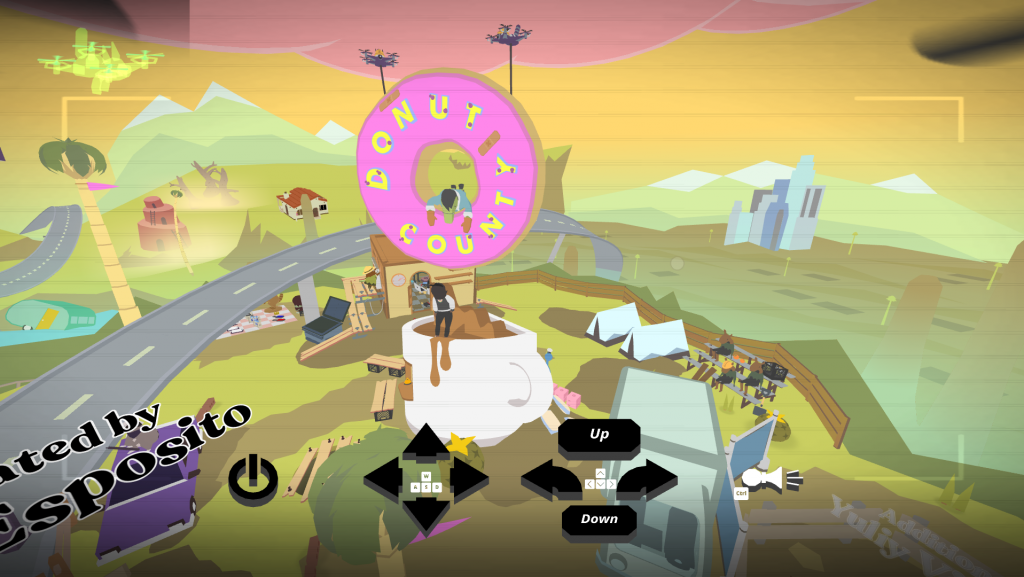
Even the end credits are full of Easter Eggs. Be sure to look around.
Linux Support: 2/5
This wouldn’t be a TPP article if we didn’t at least mention Linux support for the title, so here’s a quick synopsis:
VFIO worked fine with this game, as expected, but the Proton 3.7.5 (Steam Play) compatibility layer couldn’t get it to start, and no amount of fiddling with the GOG version in wine would get it past the opening cinematic. It would be nice to see this title come to Linux natively, as it is built in unity and already has a mac version, because smaller games like these never receive first-tier support from wrapper software.
Overall: 4/5
I heartily recommend Donut County to anyone looking for something a bit different, or anyone who values writing quality over length. The game is a well put together one off experience, and the devotion the game’s author put into crafting it shines through the moment you start the first level. Donut county was built with vision. Pick it up, you won’t be disappointed.
Join our Discord for VFIO help and game discussion, and follow us on Twitter for regular news and updates!

